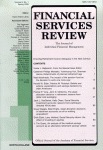On the Stationarity of Savings in the United States
DOI:
https://doi.org/10.1016/1057-0810(95)90019-5Abstract
The question of stationarity of saving as a percent of disposable personal income is examined in detail. National Income and Product Accounts data is taken annually from 1929-1988, and quarterly from 1970-1988. The initial approach uses Dickey-Fuller (1987) tests. Their results indicate that, depending on the time period chosen, one is led to believe that both stationarity and non-stationarity exist in the data. ARIMA models are then fitted to both annual and quarterly data. Relatively large non-difference models are necessary to fit the long-range annual data (1929-1988), while relatively small differentiated models fit quarterly and short-range annual (1946-I 988) models. It is concluded that at least for saving as a percent of disposable income in the US, it is reasonable to believe that saving is not a stationary process. Quarterly Review of Economics & Finance, Summer 1994, 34(2):
183-I 93. (Reprinted with permission of ABIfInform, Copyright UMI.)
Published
How to Cite
Issue
Section
License
Copyright (c) 1995 JAI Press Inc.

This work is licensed under a Creative Commons Attribution-NonCommercial 4.0 International License.
Author(s) retain copyright and grant the Journal right of first publication with the work simultaneously licensed under a Creative Commons Attribution-NonCommercial 4.0 International License that allows to share the work with an acknowledgment of the work's authorship and initial publication in this Journal.
This license allows the author to remix, tweak, and build upon the original work non-commercially. The new work(s) must be non-commercial and acknowledge the original work.


